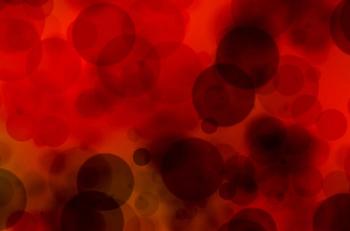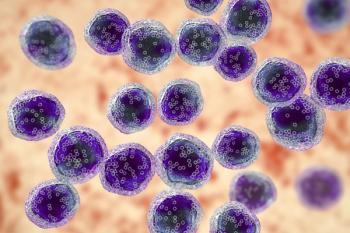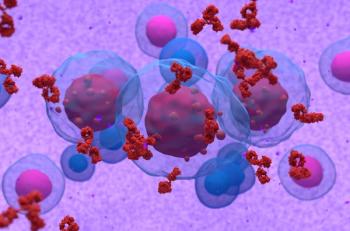
Oncology NEWS International
- Oncology NEWS International Vol 10 No 11
- Volume 10
- Issue 11
Early Phone Follow-Up Addresses Brachytherapy Side Effects
SAN DIEGO--The Cancer Center at Carle Clinic, Urbana, Illinois, has developed a phone assessment program to reach out to prostate brachytherapy patients before their 1-month follow-up visit, Mary Collins, RN, MSN, OCN, clinical nurse specialist at the Cancer Center, said at the 26th Annual Conference of the Oncology Nursing Society (abstract 73).
SAN DIEGO--The Cancer Center at Carle Clinic, Urbana, Illinois, has developed a phone assessment program to reach out to prostate brachytherapy patients before their 1-month follow-up visit, Mary Collins, RN, MSN, OCN, clinical nurse specialist at the Cancer Center, said at the 26th Annual Conference of the Oncology Nursing Society (abstract 73).
Patients who choose prostate seed implants to treat prostate cancer often experience side effects 7 to 10 days following the implant, but patients’ return visits are generally 1 month after the seed implant, Ms. Collins said.
"I developed this tool to call the patient 2 weeks after the implant to assess the side effects," she said. "Then, in collaboration with the physicians here, we developed a set of standard orders."
The assessment form used during the calls includes specific items about urinary and rectal symptoms, activity, and an open-ended question that addresses other possible concerns a patient may have. The nurse can refer to the standard orders to manage side effects the patient is experiencing. The forms, Ms. Collins said, were reviewed by the urologists, radiation oncologists, and nursing staff for accuracy and content.
"Some common side effects are frequency and urgency of urination and burning," she noted. "Those are the main three. Some men will also complain of frequent loose stools."
Surprisingly, she said, "many of these men say they are having these problems, but they think they just have to live with them. With this early assessment, they can get started on some form of treatment. When they come in for the scheduled visit 2 weeks later, the doctor can then assess how they’re doing."
Currently, Ms. Collins is the only person doing the phone assessment, and she’s been doing it for about a year and a half. "But I’d recommend this to other nurses who work with seed-implant patients," she said. "You can offer them a lot of reassurance and education on the phone."
Articles in this issue
about 24 years ago
Two Large AIDS Studies Will Increase Enrollments 60%about 24 years ago
Gene Therapy Plus Radiotherapy Delays Esophageal Cancer Growth in Miceabout 24 years ago
Platinum-Based Regimens Are Favored in Advanced NSCLCabout 24 years ago
Radiofrequency Ablation Proving Effective in Small Renal Cell Tumorsabout 24 years ago
Templates Used to Document Chemotherapyabout 24 years ago
Grade Dictates Treatment of Primary NHL of the Breastabout 24 years ago
Low Arsenic Levels in Drinking Water Increase Cancer Riskabout 24 years ago
Astatine-211-Labeled MoAB Promising in Brain Cancer Patientsabout 24 years ago
GEMOX Active With Low Toxicity in Pancreatic Cancerabout 24 years ago
Legislation Urged to Revitalize the National Cancer PlanNewsletter
Stay up to date on recent advances in the multidisciplinary approach to cancer.


















































































